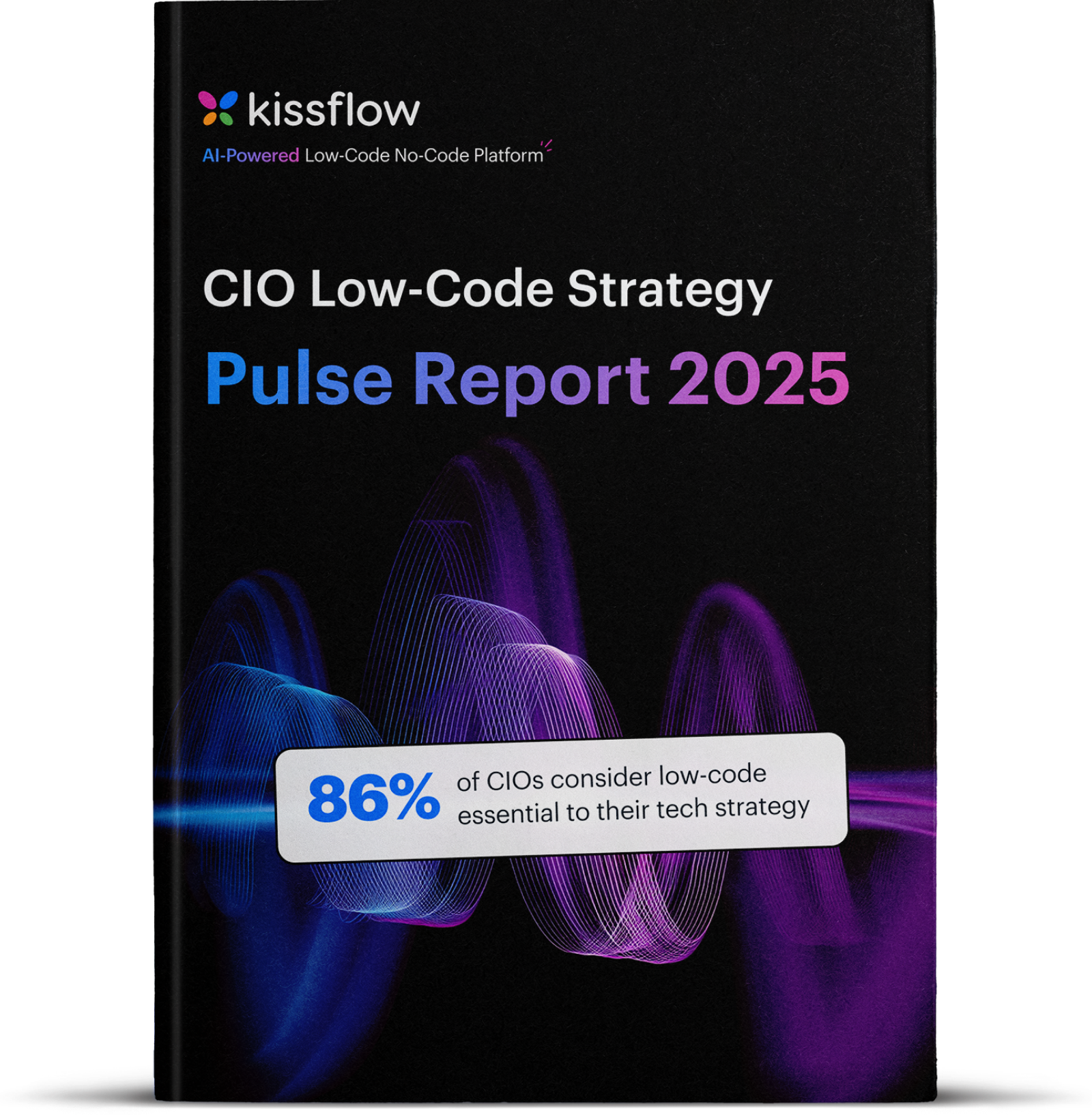
- >
- Retail>
- Managing dark stores in quick commerce
Managing Dark Stores in Quick-Commerce: Workflow Automation for Quality and Site Oversight
The digital transformation imperative has fundamentally altered retail's last mile, where micro-fulfillment centers known as dark stores serve as critical infrastructure, enabling 10-minute delivery promises. For technology and business leaders, these facilities represent operational efficiency achievements and modern retail's most complex quality management challenges.
When customers place orders at 9 PM expecting cold medicine, fresh milk, and dinner ingredients within 10 minutes, that seamless experience relies on intricate networks of automated systems, real-time data flows, and human processes executing with manufacturing precision while maintaining retail flexibility.
Executive teams overseeing quick-commerce operations face fundamental strategic decisions. Traditional retail management approaches cannot scale to support networks of distributed micro-fulfillment centers operating at quick-commerce speeds. The critical question becomes whether to invest proactively in dark store management automation in retail systems or wait until compliance failures force reactive technology implementations during crises.
Architectural complexity demands systematic technology approaches
The strategic importance of dark stores becomes clear when considering market dynamics. According to industry analysts, "dark stores deliver on speed, convenience, and reliability—three qualities customers worldwide increasingly value." This customer preference shift explains why dark stores represent paradigm shifts requiring executives to reconceptualize retail operations through technology-first perspectives.
"Dark stores in retail are brick-and-mortar locations designed to fulfill online orders, not for in-store shoppers. Unlike bustling traditional stores, dark stores operate as warehouses, stocked with products solely for online sales and delivery."
- EMB Global
This fundamental distinction helps explain why dark stores represent paradigm shifts requiring executives to reconceptualize retail operations through technology-first perspectives. Unlike traditional retail facilities designed for customer interaction, these micro-fulfillment centers function as high-velocity distribution nodes, integrating seamlessly with digital ordering platforms, inventory management systems, and last-mile delivery networks.
The operational architecture resembles distributed computing systems more than conventional retail infrastructure. Each dark store operates as an independent node, maintaining perfect synchronization with central systems while adapting to local market conditions, regulatory requirements, and operational constraints. This distributed model creates exponential complexity in quality management, compliance monitoring, and performance optimization.
Traditional oversight creates systemic blind spots
Chief Technology Officers understand that legacy retail management approaches create visibility problems plaguing organizations attempting to monitor distributed operations through manual processes. Traditional auditing methodologies, developed for centralized retail environments, cannot provide real-time visibility and systematic oversight required for high-velocity distributed operations.
Fundamental architecture problems become apparent when considering how standard operating procedures propagate across networks. Manual communication of hygiene protocols creates reliability issues plaguing systems relying on human-mediated data transmission across multiple nodes. This process architecture introduces failure points where information corruption, misunderstanding, or local optimization can compromise system integrity.
Manual evaluation processes compound architectural problems by introducing significant latency between issues occurring and being detected and resolved. Traditional auditing approaches require physical presence at each location, creating time delays that allow problems to affect hundreds of customer orders before corrective action is implemented.
Business impact extends beyond operational inefficiencies into brand reputation and customer retention metrics. In quick-commerce environments, brand trust represents primary competitive differentiators, making operational consistency a strategic asset requiring systematic protection through proper technology infrastructure.
When customers receive spoiled groceries or improperly stored medications from dark stores, trust violations create customer acquisition cost implications rippling through financial performance metrics. This amplification effect illustrates why hygiene compliance in dark stores represents enterprise risk management challenges requiring technology solutions rather than operational management approaches.
Comprehensive automation enables systematic quality control
Solutions require implementing enterprise-grade systems providing real-time visibility and automated compliance monitoring across entire dark store networks. Technology leaders should approach these challenges like distributed systems architecture problems, designing comprehensive automation frameworks that include:
Core Automation Components:
-
Digital approval workflows that transform new location onboarding from ad-hoc processes into systematic, auditable sequences, ensuring compliance from initial setup
-
Dark store quality control systems enable continuous monitoring rather than periodic sampling, with automated sensors tracking temperature variations, humidity levels, and equipment performance in real-time
-
Mobile inspection forms for retail that integrate quality monitoring into daily operational workflows, allowing staff to complete digital quality checks during regular work activities
-
Automated incident escalation systems ensure compliance problems receive appropriate attention within defined service level agreements
-
SLA tracking in retail operations becomes particularly critical when dealing with perishable goods and regulated products, where delays can result in significant financial losses
-
Real-time audit dashboards that transform operational management from reactive to proactive by providing continuous visibility into performance metrics across entire networks
Integration Requirements:
-
Seamless connection with existing point-of-sale systems, inventory management platforms, and delivery coordination software
-
Unified visibility enabling comprehensive decision-making while reducing administrative overhead
-
A holistic operational view that allows executives to understand how different elements interact and affect business performance
Platform selection requires comprehensive integration capabilities
Chief Information Officers evaluating technology platforms for dark store management automation should prioritize solutions that provide enterprise-grade scalability, integration capabilities, and customization flexibility rather than point solutions that address individual operational challenges.
Kissflow's platform architecture addresses the comprehensive requirements of dark store management automation in retail through configurable workflows that adapt to specific operational requirements while maintaining systematic oversight capabilities. The platform's approach to retail dark store workflow automation recognizes that successful technology implementations must balance operational flexibility with systematic oversight.
Integration architecture becomes critical when implementing comprehensive automation across the existing technology infrastructure. Most quick-commerce operators invest significantly in point-of-sale systems, inventory management platforms, delivery coordination software, and customer relationship management tools. Effective automation platforms must integrate seamlessly with existing systems rather than requiring costly replacements.
Kissflow's integration capabilities eliminate data silos preventing effective oversight in complex operational environments. Rather than managing separate dashboards for compliance monitoring, inventory management, and delivery operations, integrated systems provide unified visibility, enabling comprehensive decision-making while reducing administrative overhead.
This integration approach becomes essential for effective dark store management automation in retail because isolated systems cannot provide the holistic visibility required for strategic management. When inventory management systems, compliance monitoring tools, and operational dashboards operate independently, executives lose the ability to understand how different operational elements interact and affect overall business performance.
Real-time audit dashboards serve as executive information systems for dark store operations, providing instant visibility into compliance status, performance trends, and emerging issues across all locations. The mobile-first architecture of modern inspection systems recognizes that effective oversight must integrate with existing operational workflows rather than creating additional administrative burdens. Mobile inspection forms for retail enable quality monitoring during regular work activities without disrupting productivity or requiring additional staffing dedicated to compliance activities.
Measurable business outcomes justify strategic investment
The performance advantages of systematic automation become evident when examining operational metrics. Recent market research highlights that dark stores can reduce order fulfillment times by up to 75 percent[1], making same-day or even 10-minute delivery a reality for urban consumers. This dramatic efficiency improvement translates directly into competitive advantages that justify comprehensive technology investment.
Operational Efficiency Gains:
-
Faster market entry: Automated workflows dramatically reduce the time required to open new dark store locations while ensuring complete compliance
-
Proactive problem prevention: Real-time monitoring systems identify temperature variations, hygiene protocol deviations, and equipment malfunctions before they impact customers
-
Systematic hygiene compliance: Continuous monitoring tracks hand-washing compliance, cleaning schedules, and temperature maintenance with precision manual oversight cannot achieve
Risk Management and Compliance:
-
Comprehensive audit trails: Documentation capabilities are essential when regulatory authorities investigate quick-commerce dark store compliance practices
-
Regulatory transparency: Automated systems provide detailed evidence of systematic compliance management and consistent operational standards
-
Enterprise risk reduction: Systematic oversight prevents compliance failures that could damage brand reputation or attract regulatory intervention
Competitive Advantages:
-
Customer experience consistency: Automated systems ensure every dark store maintains identical standards regardless of location, staffing levels, or operational volume
-
Enhanced customer lifetime value: Reliable experiences directly impact customer retention and acquisition cost metrics
-
Performance accountability: SLA tracking in retail operations enables data-driven, continuous improvement in operational responsiveness
Strategic timing determines competitive positioning
The market context makes automation timing a critical strategic decision. With the global quick commerce market expected to grow at a CAGR of over 20 percent through 2025, investing in automation for dark store management is not just a competitive edge—it's necessary for sustainable growth.
Technology leaders must recognize that workflow automation represents essential infrastructure for sustainable growth rather than an optional efficiency enhancement. The quick-commerce industry continues evolving at unprecedented speed, with customer expectations and competitive pressures constantly raising operational excellence standards that manual oversight approaches cannot meet at scale.
Forward-thinking executive teams approach dark store management automation as strategic technology infrastructure, enabling sustainable competitive positioning rather than tactical operational improvement. Quick-commerce dark store compliance and hygiene compliance in dark stores become manageable strategic challenges rather than operational liabilities when proper automation systems provide systematic oversight and documentation.
Kissflow's platform approach to dark store management automation in retail democratizes access to enterprise-grade operational control systems previously available only to the largest market participants. When implemented through comprehensive automation platforms, real-time audit dashboards, and mobile inspection forms for retail become standard operational infrastructure rather than premium capabilities.
The strategic choice facing quick-commerce executives involves implementing comprehensive workflow automation proactively as competitive infrastructure or reactively as a crisis response. Dark store quality control systems and retail dark store workflow automation will become standard competitive requirements as industries mature and regulatory oversight intensifies.
SLA tracking in retail operations, hygiene compliance in dark stores, and systematic quality management represent technological foundations for quick-commerce success in regulated markets with sophisticated customer expectations. Executive teams investing in comprehensive automation infrastructure position organizations for sustainable growth, while those relying on manual oversight approaches limit scaling potential and competitive positioning.
The ultimate strategic consideration becomes whether to build competitive advantage through systematic operational excellence or accept limitations and risks associated with manual oversight approaches that cannot scale effectively in demanding quick-commerce environments where operational consistency directly impacts customer satisfaction, regulatory compliance, and long-term business sustainability.
Transform your dark store operations from compliance liability to competitive advantage
Frequently Asked Questions
1. How does AI optimize dark store operations in quick-commerce?
AI acts like an intelligent operations manager that analyzes thousands of data points to predict demand, optimize inventory placement, and streamline picking routes. Machine learning algorithms learn from historical patterns to automatically adjust stock levels before demand spikes, determine optimal staffing schedules, and suggest the most efficient product layouts. This continuous optimization reduces order fulfillment times while minimizing waste and operational costs.
2. What automation tools improve order fulfillment in dark stores?
Mobile inspection forms for retail enable real-time quality checks, while automated inventory management systems track stock levels and trigger reorders. Digital workflow platforms coordinate picking sequences, SLA tracking in retail operations ensures timely order processing, and real-time audit dashboards provide visibility into fulfillment performance. These tools work together to eliminate manual bottlenecks and maintain consistent service levels across all locations.
3. How do retailers monitor dark store quality using automation?
Dark store quality control systems use automated sensors to monitor temperature, humidity, and equipment performance continuously. Mobile inspection forms for retail allow staff to complete digital quality checks during regular work activities, capturing compliance data in real-time. Real-time audit dashboards aggregate this information to provide managers with instant visibility into quality metrics, while automated alert systems immediately notify appropriate personnel when issues arise, ensuring rapid resolution.
4. What role does AI play in managing site oversight for dark stores?
AI transforms site oversight from reactive monitoring to predictive management. Machine learning algorithms analyze patterns in equipment performance, staff behavior, and operational metrics to identify potential issues before they impact customers. AI-powered systems can predict when refrigeration units might fail, identify staff training gaps through performance analysis, and automatically escalate compliance issues based on severity and historical resolution patterns, enabling proactive rather than reactive management.
5. How can Kissflow streamline dark store logistics and inventory tracking?
Kissflow's platform integrates inventory management with workflow automation, creating unified systems that track products from delivery to customer fulfillment. The platform's real-time audit dashboards provide visibility into stock levels, expiration dates, and movement patterns across all locations. Mobile inspection forms for retail enable staff to update inventory status during regular activities, while automated workflows ensure proper rotation procedures and reorder triggers. This integration eliminates data silos and provides comprehensive logistics oversight through a single platform.











